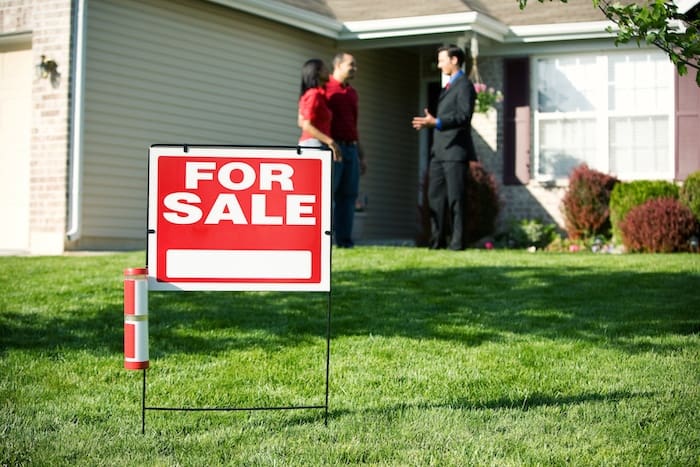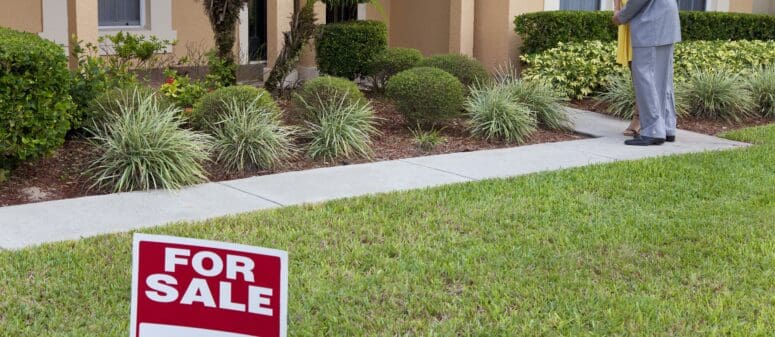How Effective Are Real Estate For Sale Signs, Really?
- Published on
-
 Eda Yu Contributing AuthorClose
Eda Yu Contributing AuthorClose Eda Yu Contributing Author
Eda Yu Contributing AuthorEda is a writer and arts journalist in the Bay Area. Her work can be seen in The Huffington Post, East Bay Express, COLLiDE, The Daily Californian, and the Believer. She attended U.C. Berkeley, where she earned a B.S. in Chemical Biology and a B.A. in French.
When you put your home up for sale, a real estate “For Sale” sign goes up in your front yard. That’s standard practice. Long before the internet, real estate for sale signs felt crucial to a seller’s success. Try Googling “home for sale” on image search and see if you can find a stock photo without the classic red and white signage. If given the choice, few sellers would waste an opportunity to draw in passersby or interested friends of nearby neighbors.
Now, however, with the majority of buyers gravitating towards online searches, many sellers are asking their real estate agents: do for sale signs actually help boost home sales or are they simply a longstanding tradition we continue to uphold, despite their lack of effectiveness?
In a report published by the National Association of Realtors (NAR) in 2014, over 90% of home buyers begin their search by going online. The speed and efficiency of the Google search has transformed the way the vast majority of buyers kick off the process of hunting for their desired house, style, and surrounding neighborhood.
These days it’s rare to find someone who would go on a long drive to scope out certain places — especially if they don’t have any leads in the area. In fact, in 2013, the NAR shared that only 9% of purchased homes were originally found through a yard sign.

So, What Do Real Estate For Sale Signs Help With?
According to Sarah Stovall, who ranks in the top 2% of sellers’ agents in North Atlanta, Realtors signs still make a difference.
“A lot of the time, when somebody is just riding through a neighborhood, they may not have picked up that neighborhood on their online searches,” Stovall explained. “But, [if the buyers] see a For Sale sign…and they’re really serious about looking for a home, they’re going to pick up the phone and call me, a listing agent.”

For many real estate agents, the Realtor’s sign acts as a way for potential buyers to directly contact listing agents or to broaden their boundaries into neighborhoods they hadn’t considered before. So, even though the yard sign might not have the largest measurable direct impact as your online real estate listing, Stovall doesn’t see a reason not to include a sign — especially when it’s a relatively simple marketing tactic that shows anyone passing through the neighborhood that your property is for sale.
In addition to drawing attention from passersby, “House For Sale” yard signs elicit responses from neighbors and other residents in the area. A purely physical indication that your home is for sale allows people to bypass the online search — an action you can only take if you know what you’re looking for.
“As technological as we all are, your next door neighbor may not Google or do HomeLight to find out if that house is listed or not,” said Stovall. “[But] as soon as a real estate sign is in the yard, they know the house is for sale. And they go call their best friend and say, ‘Hey! That house that you always wanted to move into is now for sale.’”
Why Wouldn’t You Want a For Sale Sign in Your Front Yard?
Supposed negative effects of putting a For Sale sign in your yard typically center around safety and the general privacy concerns of the homeowner. When random people publicly see that your house is for sale, it could become a target destination for burglars or local thieves.
Sometimes, the homeowner’s safety could even be at risk, especially if sensitive personal information is published in photos circulating the Internet. Stovall recounted an extreme case, where thieves used names of the homeowner’s children — found in wall decorations, for example — to coerce the seller into giving them what they wanted.
“People will look at the pictures, and they can see everything that you have in your house. And — I hate to say it — but they could be tasting your home to find out what’s in there,” says Stovall.
Homeowners who choose to stake a “For Sale” sign may have to deal with the added risk factor of strangers asking to enter their home at random times. While agents warn sellers not to let anybody in their homes unless the visitor is with a licensed real estate agent — “Don’t just let somebody in your house because they say they want to buy it…Can’t do that in this world, we’re too crazy. There are too many crazy people out there!” Stovall says — sellers ultimately have the final responsibility to decide whether or not others are allowed entry.
Then there’s the question of secrecy. Some high-end homeowners believe that using a sign to show that their house is publicly on the market may ruin the exclusivity of the home sale and shut down chances to draw out higher offers from interested buyers. You won’t catch any real estate agent throwing “For Sale” signs in the yards of their “pocket listings.”

So…Are Real Estate For Sale Signs Worth the Risk Factor?
For a top agent like Stovall, the risk of having a For Sale sign in the front yard is well worth the potential benefits — provided that the seller is careful. Although nationwide statistics for homebuyers who find their final sale through a real estate sign are slim, the increased traffic the signs generate — especially in a busy neighborhood — is enough to outweigh their potentially negative effects.
Stovall shared that she has actually sold houses where “the buyer was unrepresented, which means that they didn’t have their own agent and negotiated the whole transaction based on the fact that they were driving through the neighborhood [and saw the house was for sale]. They didn’t have a Realtor; they wanted to buy a house. They wanted to see the house. They liked the house, and we put it under contract.”
While planting a Realtors sign in your front yard on your selling journey may feel a bit archaic in our dynamic digital age, it’s important to recognize the effect physical, tactile signs still have. Even though we can’t measure their reach, For Sale signs have become emblems of the housing market that people know, recognize, and seek out when looking to purchase a home.
And, for now, it looks like they’re here to stay.
